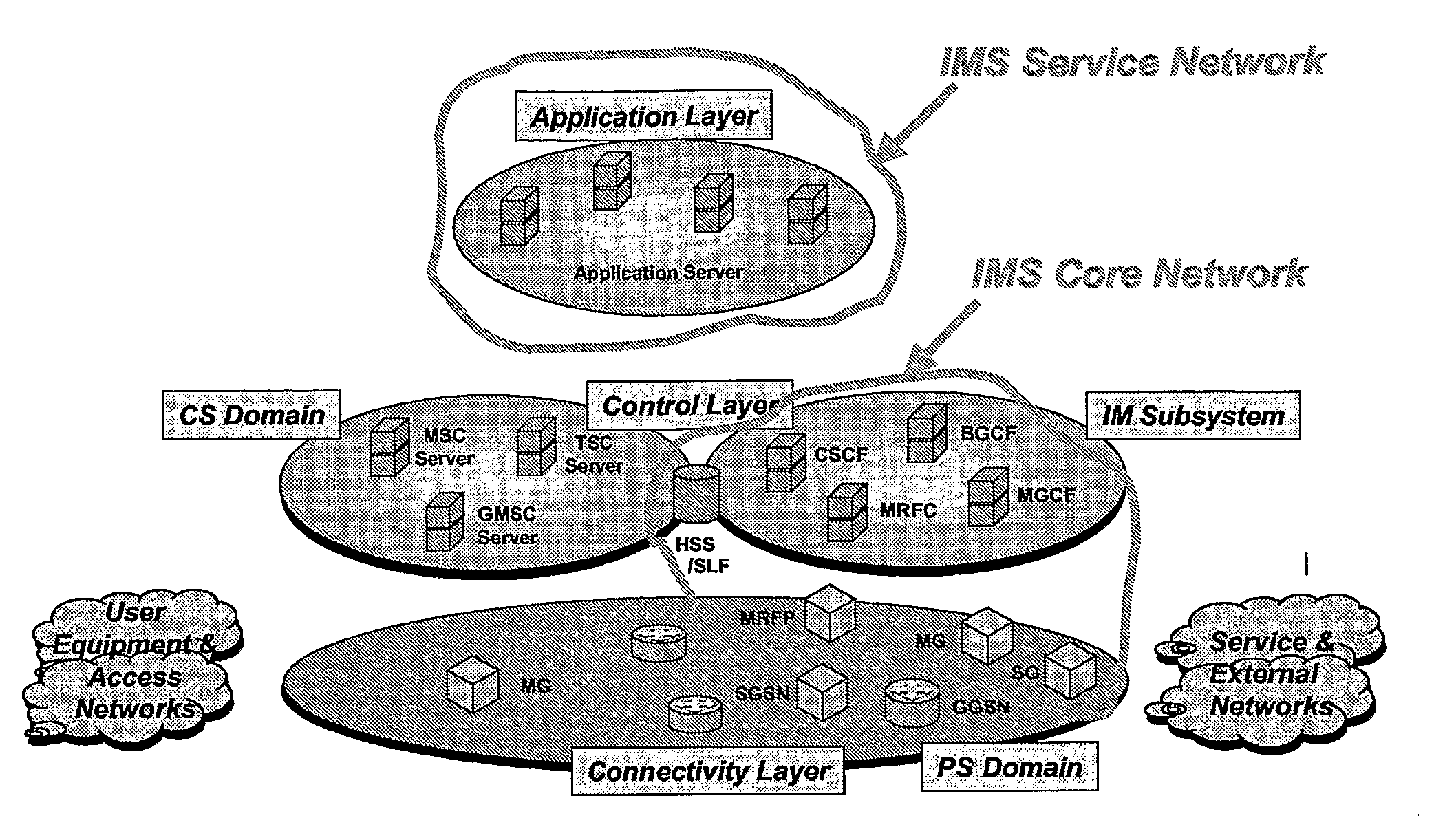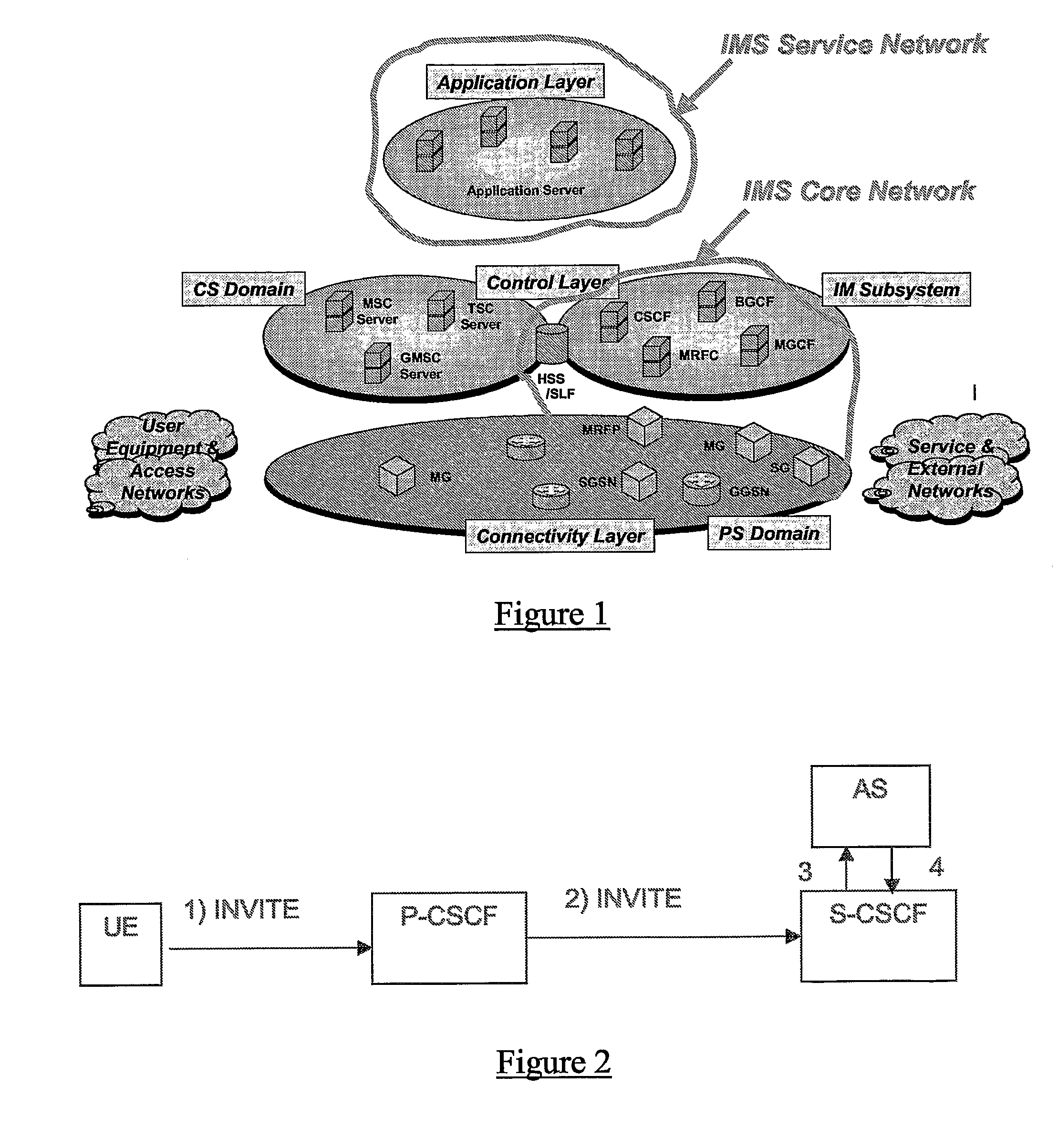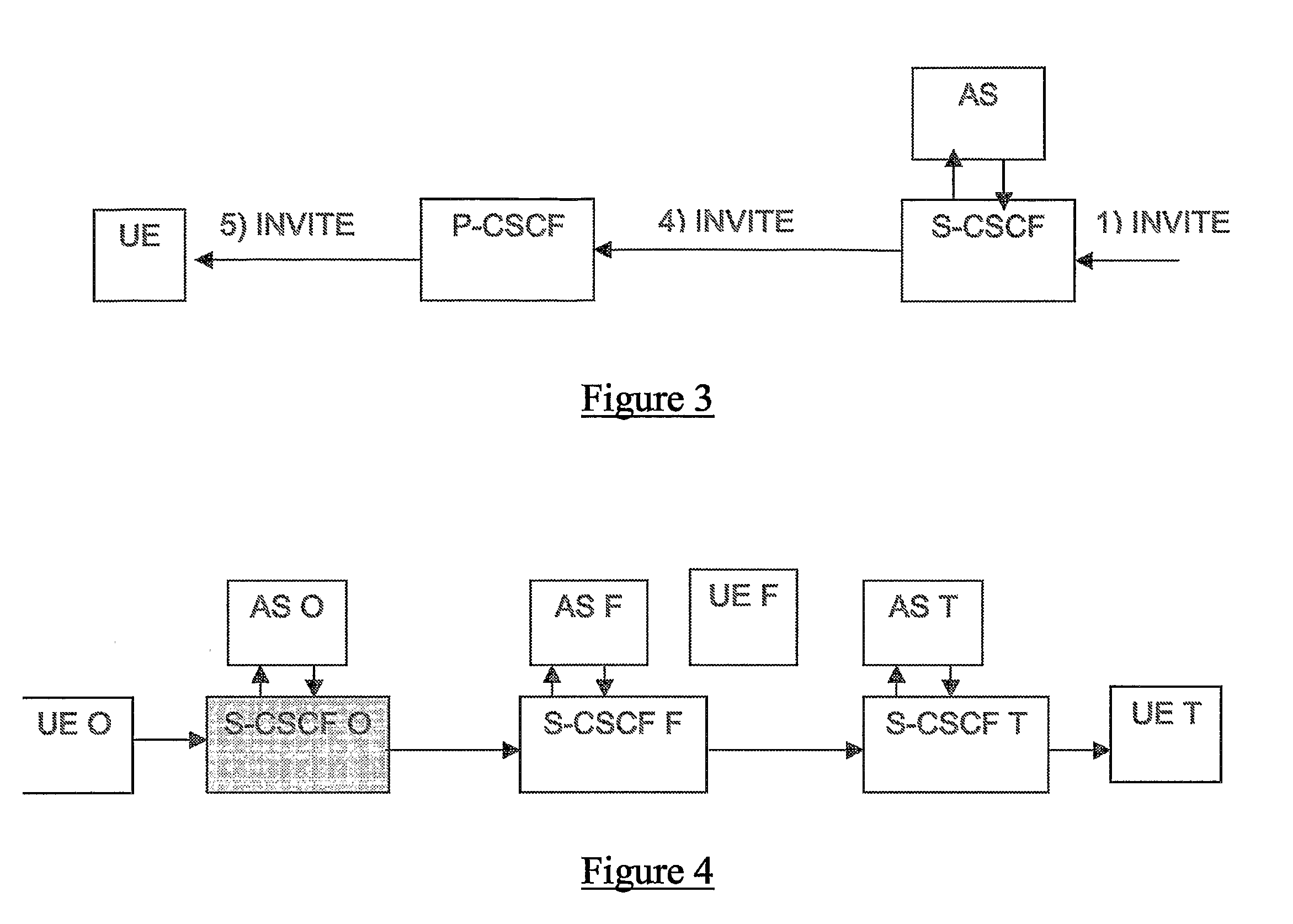Call forwarding in an IP multimedia subsystem (IMS)
a multimedia subsystem and call forwarding technology, applied in the field of call forwarding in an ip multimedia subsystem (ims), can solve problems such as unacceptability
- Summary
- Abstract
- Description
- Claims
- Application Information
AI Technical Summary
Benefits of technology
Problems solved by technology
Method used
Image
Examples
Embodiment Construction
[0055]The problem of allowing a “forwarding” S-CSCF to perform a restriction check on an INVITE message has been considered above. It is necessary to provide a mechanism that identifies to the forwarding S-CSCF that an INVITE received from an Application Server needs to be treated in a different way from INVITEs received from a P-CSCF or other CSCF.
[0056]Four alternative solutions are proposed here.
Solution 1
[0057]The INVITE arriving at the S-CSCF includes include in its header the R-URI pointing to one of the S-CSCF F's registered user, UE-F, i.e. userf_public1l @home2.net. It also includes the P-Asserted Identity of UE-O, i.e. “John Doe”, . The S-CSCF F will send the initial request or standalone transaction to the AS (in response to the IFCs obtained for UE-F), adding the SIP URI of the AS as the topmost URI of the route header, i.e. sip:as1.home1.net;lr. In addition, the S-CSCF F includes its own SIP URI beneath the AS URI in the route header together with the “original dialog i...
PUM
 Login to View More
Login to View More Abstract
Description
Claims
Application Information
 Login to View More
Login to View More - R&D
- Intellectual Property
- Life Sciences
- Materials
- Tech Scout
- Unparalleled Data Quality
- Higher Quality Content
- 60% Fewer Hallucinations
Browse by: Latest US Patents, China's latest patents, Technical Efficacy Thesaurus, Application Domain, Technology Topic, Popular Technical Reports.
© 2025 PatSnap. All rights reserved.Legal|Privacy policy|Modern Slavery Act Transparency Statement|Sitemap|About US| Contact US: help@patsnap.com



